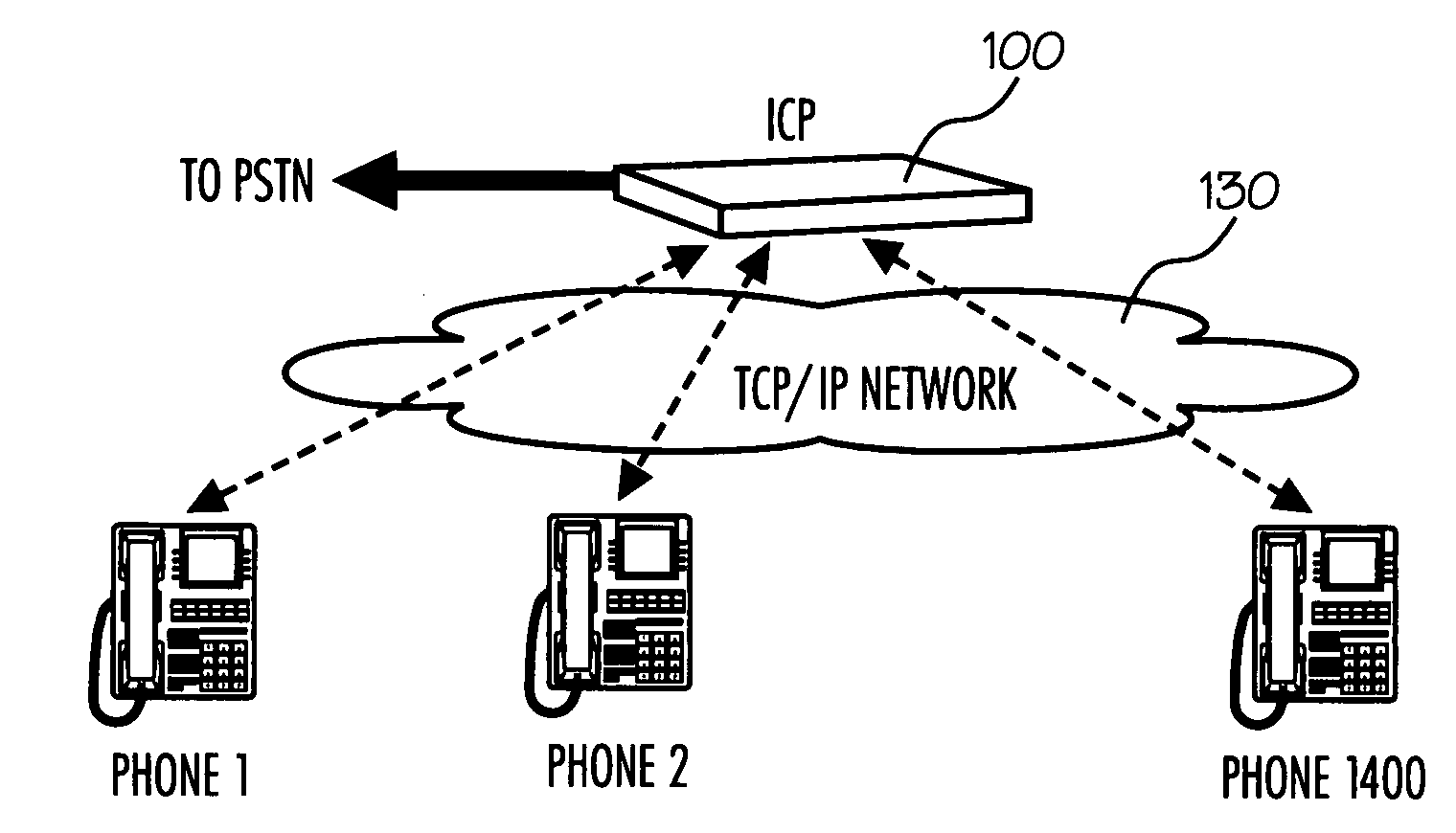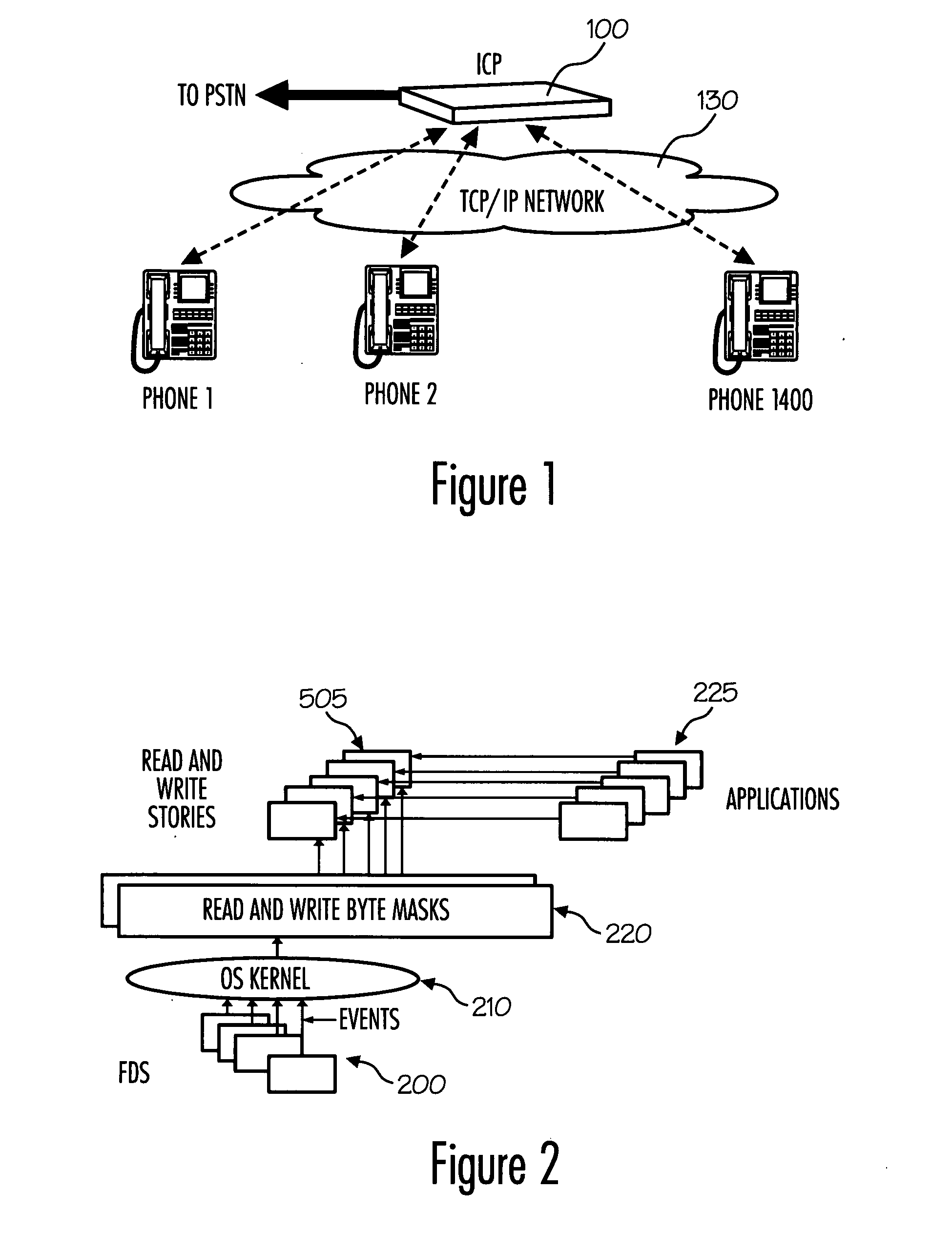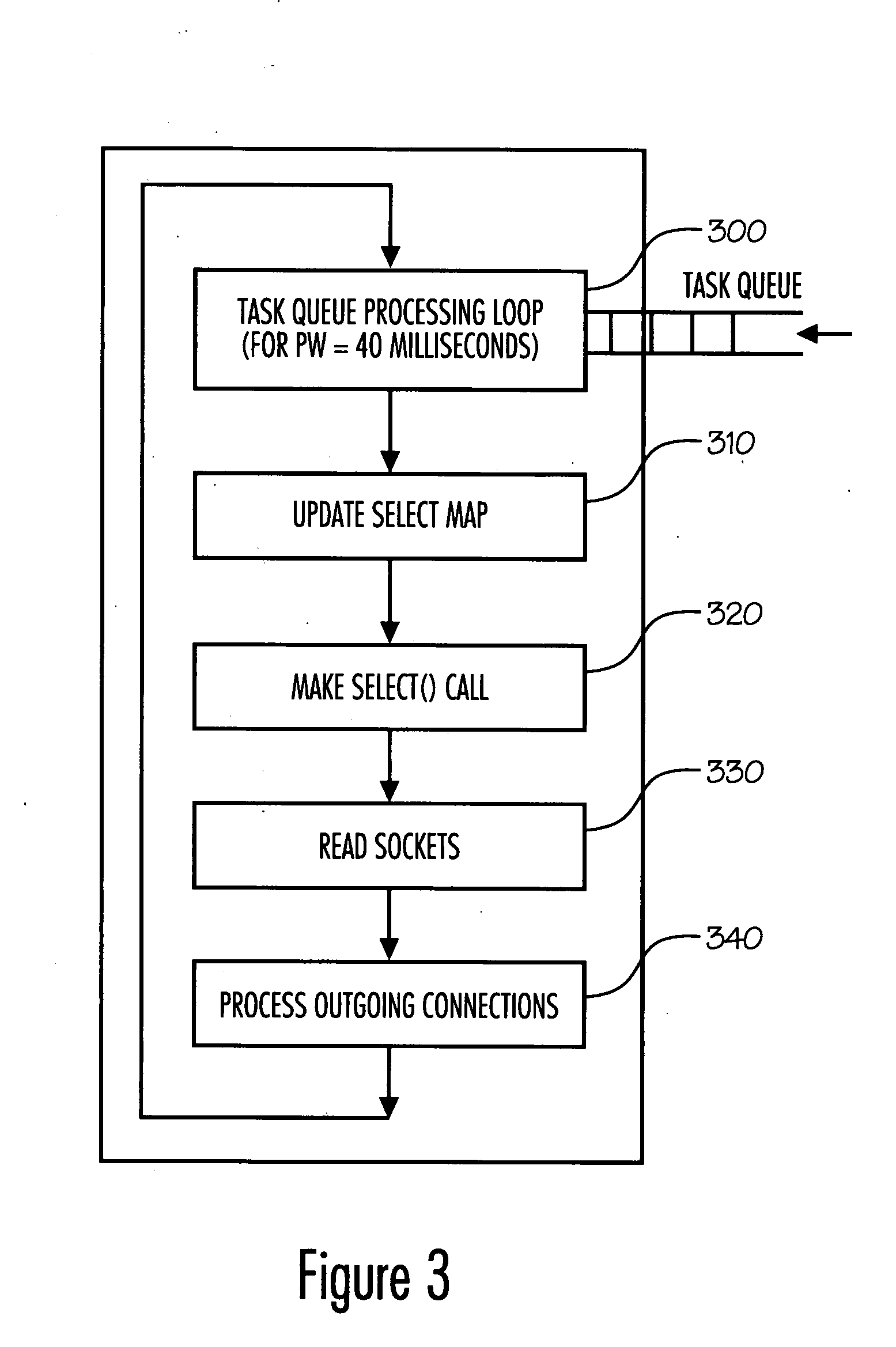Centralized polling service
a polling service and centralized technology, applied in the field of clientserver systems, can solve the problems of poor scalability, high computing overhead, and relative light socket usag
- Summary
- Abstract
- Description
- Claims
- Application Information
AI Technical Summary
Benefits of technology
Problems solved by technology
Method used
Image
Examples
Embodiment Construction
[0033]With reference to FIG. 1, an exemplary communication system is shown comprising a communication switch, such as the MN3300, ICP (100) manufactured by Mitel Networks Corporation, connected to a local area network or LAN (130) and to the Public Switched Telephone Network (PSTN). A plurality of IP telephone devices such as Phone 1, Phone 2 . . . Phone 1400 are connected to the LAN (130).
[0034]A person of skill in the art will appreciate that the configuration of FIG. 1 is representative of a typical converged communication network, and that numerous variations in configuration, components, etc. are possible.
[0035]In the exemplary embodiment of FIG. 1, the ICP (100) functions in a server role to support up to N=1400 IP phone clients. Each IP Phone establishes a TCP socket connection with the ICP (100) for signaling purposes. The ICP (100) performs I / O multiplexing over a very large number of TCP sockets in order to communicate with the IP phones. As discussed briefly above, the us...
PUM
 Login to View More
Login to View More Abstract
Description
Claims
Application Information
 Login to View More
Login to View More - R&D
- Intellectual Property
- Life Sciences
- Materials
- Tech Scout
- Unparalleled Data Quality
- Higher Quality Content
- 60% Fewer Hallucinations
Browse by: Latest US Patents, China's latest patents, Technical Efficacy Thesaurus, Application Domain, Technology Topic, Popular Technical Reports.
© 2025 PatSnap. All rights reserved.Legal|Privacy policy|Modern Slavery Act Transparency Statement|Sitemap|About US| Contact US: help@patsnap.com



